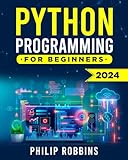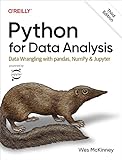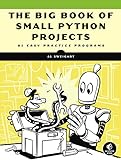To combine CSV files in memory using pandas, you can read each CSV file into a pandas dataframe and then concatenate the dataframes into a single dataframe. You can use the pd.concat() function with a list of dataframes as an argument to combine them. After concatenating all the dataframes, you can then write the combined dataframe to a new CSV file using the to_csv() method with the desired file name.
Make sure that all the CSV files have the same structure, column names, and datatype to avoid any inconsistencies when combining them. You can also specify if you want to include the index or headers in the resulting CSV file by setting appropriate parameters in the to_csv() method.
What is the difference between append() and concat() in pandas?
In pandas, append() and concat() are used to combine data frames.
The append() method is used to append a single row or multiple rows to the end of a dataframe. It adds the rows as they are, without any additional modifications or operations.
On the other hand, the concat() function is used to concatenate two or more dataframes either along the rows or columns. It gives you more control over how the data frames are concatenated, such as specifying the axis, handling duplicates, and specifying how missing values should be handled.
In summary, append() is used to add rows to a dataframe, while concat() is used to concatenate dataframes either along rows or columns.
What is the role of the pd.concat() function in pandas?
The pd.concat() function in pandas is used to concatenate pandas objects along a particular axis, either row-wise or column-wise. It combines multiple dataframes or series into a single dataframe or series, allowing for the merging of multiple datasets to facilitate data analysis and manipulation.
By default, the function concatenates DataFrames row-wise (axis=0), which means it appends one DataFrame below another. However, it also allows concatenating DataFrames column-wise (axis=1), which means it merges two DataFrames side by side.
Overall, the pd.concat() function plays a crucial role in merging and combining data from different sources in pandas, making it a valuable tool for data manipulation and analysis.
How to read a CSV file with pandas?
To read a CSV file with pandas, you can use the read_csv() function. Here is an example code snippet to show you how to read a CSV file named data.csv:
1 2 3 4 5 6 7 |
import pandas as pd # Read the CSV file df = pd.read_csv('data.csv') # Display the data print(df) |
In this code snippet, pd.read_csv() function reads the CSV file and stores the data in a pandas DataFrame named df. You can then use this DataFrame to perform various data manipulation and analysis operations.
How to include an index column in the saved CSV file using pandas?
To include an index column in a saved CSV file using pandas, you can set the index parameter to True when calling the to_csv() method. Here's an example:
1 2 3 4 5 6 7 8 9 |
import pandas as pd # Create a sample DataFrame data = {'A': [1, 2, 3, 4], 'B': ['X', 'Y', 'Z', 'W']} df = pd.DataFrame(data) # Include the index column in the saved CSV file df.to_csv('file_with_index.csv', index=True) |
In this example, the to_csv() method will save the DataFrame df to a CSV file named file_with_index.csv with an additional index column. The index column will have the default index values unless you have explicitly set a different index in your DataFrame.
How to combine multiple CSV files into a single file using pandas?
You can combine multiple CSV files into a single file using pandas by following these steps:
- Import the pandas library:
1
|
import pandas as pd
|
- Read each CSV file into a pandas DataFrame:
1 2 3 |
df1 = pd.read_csv('file1.csv') df2 = pd.read_csv('file2.csv') df3 = pd.read_csv('file3.csv') |
- Concatenate the DataFrames into a single DataFrame:
1
|
combined_df = pd.concat([df1, df2, df3], ignore_index=True)
|
- Save the combined DataFrame to a new CSV file:
1
|
combined_df.to_csv('combined_file.csv', index=False)
|
By following these steps, you can easily combine multiple CSV files into a single file using pandas.









